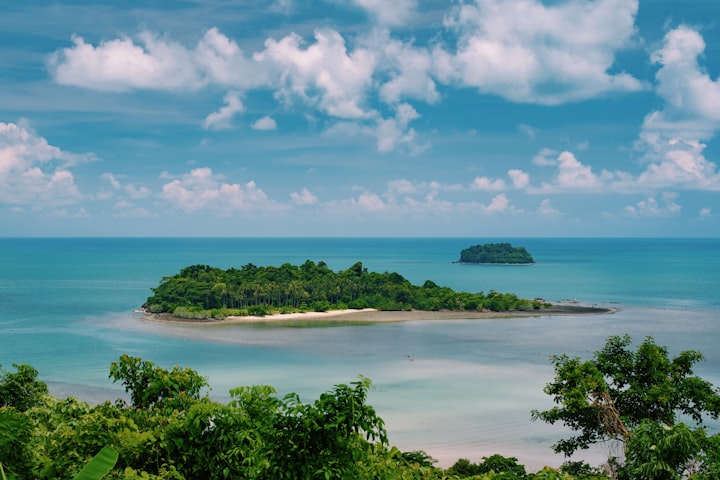
New York City is home to maybe the most well-known island on the planet: the 13-mile long, 2-mile comprehensive bundle called Manhattan. Of NYC's five wards, just one – The Bronx – is associated with the central area US.Far more modest lots dab the East River, Long Island Sound, and different waterways moving through as far as possible. A large portion of them has frightening accounts.
Barely any sicknesses have been more effective than smallpox. Eminent casualties incorporate France's King Louis XV, who is killed, and England's Queen Elizabeth I, who wore cosmetics to disguise cringeworthy facial scarring from engaging the illness as a kid. In America, an expected 90% of Native Americans passed on from smallpox, which they contracted from white pilgrims – including occasions of purposeful transmission through corrupted covers, a kind of simple biowarfare. Smallpox was at last killed in 1979 – yet not before it had its direction with New York. Roosevelt Island is a narrow, two-mile-long strip among Manhattan and Queens, enormous enough for its metro stop, its brand name cable car of Spider-Man acclaim, a couple of apartment complexes, and a specialized grounds for Cornell University.
Its southern tip contains two contiguous, distinctly various constructions: an immaculate park and landmark devoted to its namesake, Franklin Delano Roosevelt, and the remains of a nineteenth Century emergency clinic where smallpox casualties were isolated from the city and focused on, frequently futilely. From 1856 until 1875, the office referred to the present time as Renwick Hospital (after its modeler) treated about 7,000 patients every year. Almost 10,000 casualties died there over a range of twenty years. Then, at that point, similarly, as with numerous establishments, the city's enlarging populace found it. As Roosevelt Island's home developed, the smallpox unit was moved to littler, more distant North Brothers Island. By the 1950s, Renwick Hospital had gotten futile and was deserted by the city, rapidly falling into dilapidation.
A mile north of Roosevelt Island is Randall's Island, a more limited, more extensive fix at the conjunction of Manhattan, Queens, and The Bronx available by the Robert F. Kennedy (once the Triborough) Bridge. Today, Randall's is most famous for two things: show settings facilitating notable live performances, and soccer throws, baseball fields, and football fields where a significant number of NYC's schools hold practices and games. (Fun the travel industry truth: It additionally has the city's best smaller than the usual golf course.)
The region wasn't, in every case, a fun time. For quite a long time, the city concealed large numbers of its poor, debilitated, and systematized. Likewise, with a considerable lot of this current rundown's other small plots, NYC authorities considered the to be as an instant channel to shun oddballs genuinely; really, "Island of Undesirables" was once Randall's Island's nickname. Or rather, it's neighbors. Since Randall's Island itself was isolated – by a synthetic stream appropriately called Little Hell Gate Channel. They named the auxiliary turf Ward's Island, which, however not precisely a square mile, in any case, accounted for the in critical condition, criminally crazy and immaturely delinquent. Other lowlights incorporated an offensive halfway house and a potter's field. An exacting shithole, Ward's additionally housed (and keeps on lodging) a sewage treatment plant. Randall's and Ward's were reconnected during the 1960s, and the team's discouraging past isn't totally behind them. The previous site of an incapacitated mental hospital is presently the scarcely less-run down Manhattan Psychiatric Center.
Despite the renowned sculpture that, beginning in 1876, would decorate another close-by island – one that asked unfamiliar terrains to "give me your drained, your poor, your clustered masses were longing to inhale free" – one thing New York City didn't need was your infectiously ill. Just south of the Verrazzano Narrows Bridge, which interfaces Brooklyn and Staten Island, are two little parcels that have existed for precisely 151 and 148 years, separately. The more modest Swinburne was made from a landfill in 1870, with its more prominent partner, Hoffmann, finished in 1873.
At that point, nonetheless, few knew these whimsical names; to most, they were essentially Lower and Upper Quarantine Islands.NYC's most well-known migration admission office, Ellis Island, didn't initiate activities until 1892. Thirty-five years earlier, fresh introductions were prepared at Castle Garden (presently Castle Clinton) at Manhattan's southern tip. Before 1870, foreigners associated with the disease were isolated in Staten Island – not by and large reasonable since it didn't turn out to be essential for NYC until 1898. So NYC utilized a landfill to make two islands – a huge one for those possibly uncovered (yet asymptomatic) and a little one for those appearance side effects of some irresistible sickness. So essentially a tiny, artificial petri dish.






Comments
There are no comments for this story
Be the first to respond and start the conversation.